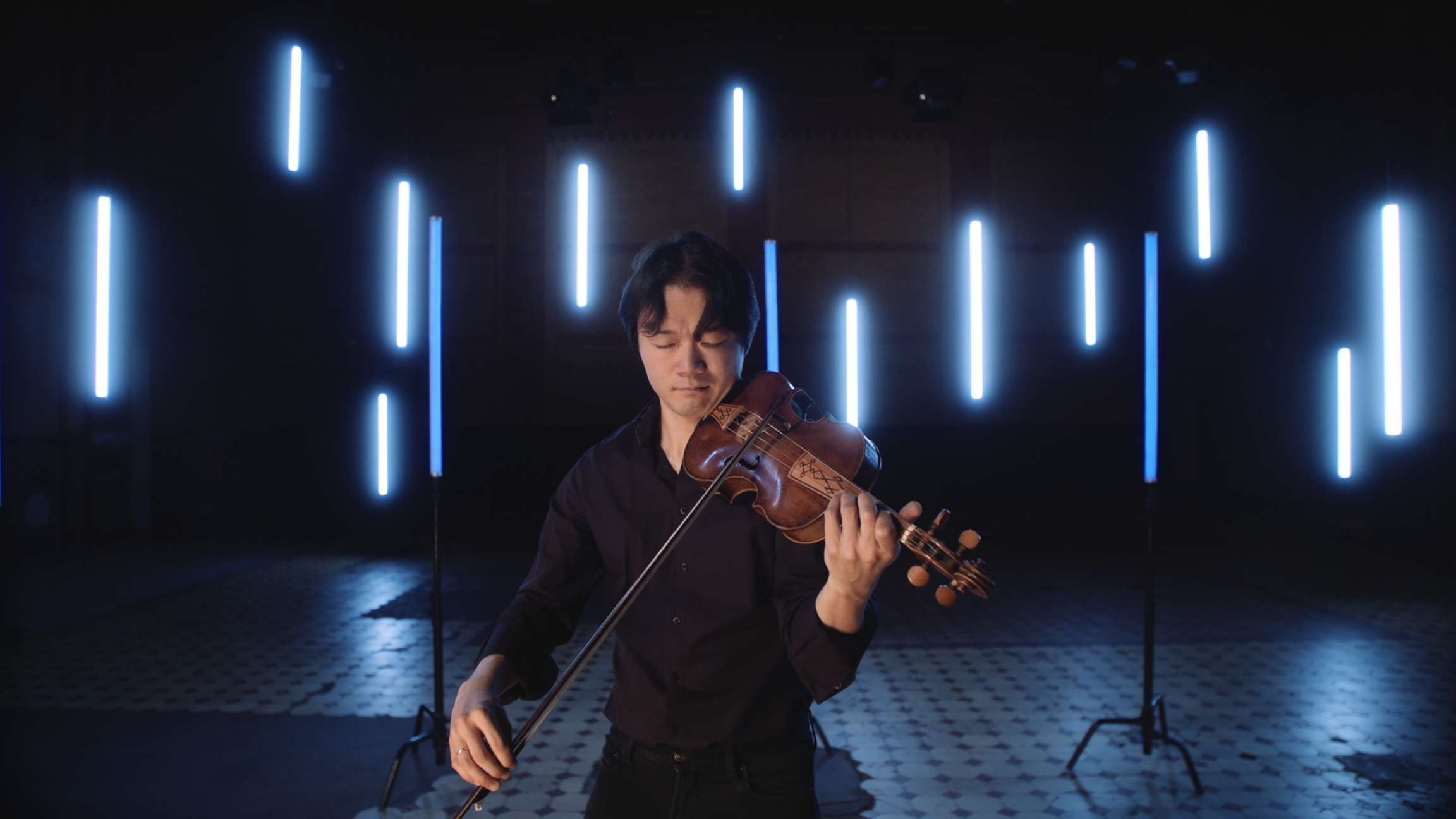

Violin Sonata no. 2 in A minor
BWV 1003 performed by Shunske Sato
Lichtfabriek, Haarlem
Behind the music
Apparently straightforward
Bach makes the unviolinistic violinistic
In contrast to some of his other compositions, Bach’s solo works for violin have always remained in use. They challenge violinists to get the best out of themselves and their instrument and to make the impossible possible – playing polyphony on your own. Other musicians have sometimes been envious of the set of six violin solos. Prompted by the notion of “the bigger the Bach repertoire, the better”, arrangements have been made for numerous other instruments. As early as 1758, for example, organist Jakob Adlung wrote that there were many “great works” among Bach’s unprinted music. Besides the big keyboard works, he refers to the “6 Sonaten und Partien ohne Bass”. In a footnote, he explains that “they are actually works for solo violin without bass, 3 sonatas and 3 partitas, but they are also well suited to playing on keyboard”. And that did indeed happen. There are keyboard arrangements of whole sonatas or partitas, and of separate movements. This Sonata no. 2 has also been arranged for keyboard (BWV 964).
But however effective and beautiful these versions are, when a sonata like this is performed by a violinist like Shunske Sato, the arrangements pale by comparison. Even the Fugue and the Andante sound completely natural here, despite their polyphony that is so difficult to play well. The Andante, in which the violinist accompanies himself with continually repeated notes below the melody, is a marvel of apparent straightforwardness. The spirited Allegro with its echo effects sometimes appears almost ironic in intent, and is cut out for the violin. Besides making the unviolinistic violinistic, Bach also embraces what the violin does best anyway.
Six sonatas and partitas for solo violin, BWV 1001-1006
At the top of his manuscript of six solo works for violin, Bach wrote ‘Sei solo’. But did he mean six solos (which is ‘Sei soli’ in correct Italian), or did he really mean ‘Sei solo’… you are on your own? In the days before spellchecks, spelling was more a question of feeling, especially in another language. It could be that Bach deliberately did not write ‘Sei soli’ above his six violin solos, choosing rather to warn his soloists before sending them off to perform with just a bow, four strings and a few of his most difficult pieces.
Bach’s solo works are in line with the wonderful tradition of Westhoff, Biber, Matteis, Schop and others, although Bach aims not so much for virtuosity, but for interiority, playing a theoretical game with the impossibility of true polyphony on a single melody instrument. Bach understood perfectly well how our brain naturally makes music out of sounds. He was also aware of the importance of his work, calling the autograph manuscript of the sonatas and partitas from 1720 ‘Book 1’. He may have had the Cello Suites and the now solitary Flute Partita in mind as carefully planned sequels for the future. Polyphony on your own – you can hardly get your head around it.
We recorded these six sonatas in a former power station in Haarlem, which used to supply the city with power and light. This explains its nickname ‘Lichtfabriek’ (Light Factory). Inspired by this special setting, the director chose to give lighting a prominent role in the performance.
- BWV
- 1003
- Title
- Violin Sonata no. 2 in A minor
- Instrument
- violin
- Genre
- chamber music
- Serie
- Six partitas and sonatas for violin
- Year
- ca. 1720
- City
- Köthen, Weimar
Extra videos
Vocal texts
Original
Translation
Credits
-
- Release date
- 7 November 2019
-
- Recording date
- 22 June 2019
-
- Location
- Lichtfabriek, Haarlem
-
- Violinist
- Shunske Sato
-
- Violin
- Cornelius Kleynman, ca. 1684
-
- Director and editor
- Onno van Ameijde
-
- Music recording
- Guido Tichelman, Bastiaan Kuijt
-
- Music edit and mix
- Guido Tichelman
-
- Camera
- Jeroen Simons, Marijn Zurburg
-
- Lights
- Zen Bloot
-
- Grip
- Jasper Leeman
-
- Data handling
- Eline Eestermans
-
- Interview
- Onno van Ameijde, Marloes Biermans
-
- Producer
- Jessie Verbrugh
-
- Acknowledgement
- Frans Wytema, for making the Cornelius Kleynman violin available to Shunske Sato.
Discover
Help us to complete All of Bach
There are still many recordings to be made before the whole of Bach’s oeuvre is online. And we can’t complete the task without the financial support of our patrons. Please help us to complete the musical heritage of Bach, by supporting us with a donation!

